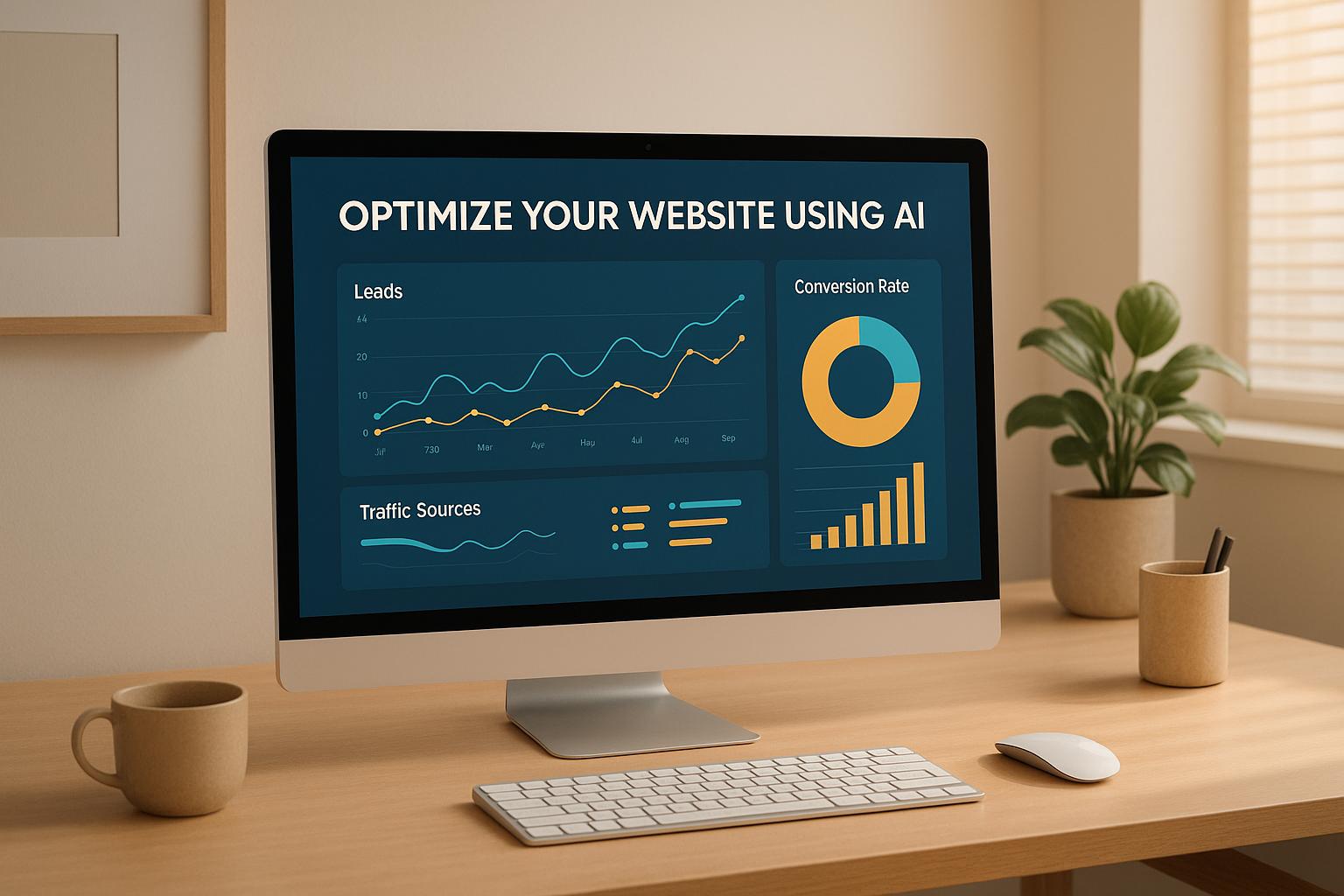

Content SEO Best Practices: Simple Strategies to Improve Rankings

Content SEO Best Practices: Simple Strategies to Improve Rankings
 12-03-2025 (Last modified: 21-05-2025)
12-03-2025 (Last modified: 21-05-2025)
If you’ve ever published a piece of content that seemed great but didn’t get any traction in search results, you’re not alone. Many marketers and business owners struggle with content SEO best practices – the key to making sure your content gets noticed by both search engines and real people.
This guide will walk you through essential best practices for content SEO, giving you clear, actionable steps you can start implementing today to boost your rankings, increase visibility, and drive more organic traffic.
1. Start with Keyword Research
Keywords are the foundation of content SEO best practices. Choosing the right keywords ensures that your content aligns with what users are searching for.

How to Conduct Effective Keyword Research:
- Use Google Keyword Planner, Ahrefs, or SEMrush to find high-traffic, low-competition keywords.
- Focus on long-tail keywords (e.g., “best SEO tools for small businesses”) for easier rankings.
- Analyze search intent—Are users looking for information, a product, or a service?
- Check out competitor rankings to identify keyword gaps and opportunities.
- Use LSI (Latent Semantic Indexing) keywords—related terms that help search engines understand your topic better.
Example: Instead of targeting “SEO tips,” go for “SEO tips for beginners in 2024” to attract a more specific audience.
2. Optimize On-Page Elements
Even the best content can struggle to rank if on-page SEO isn’t optimized. This includes title tags, meta descriptions, and URLs.
Best Practices for On-Page SEO:
- Title Tags: Keep them under 60 characters and include your primary keyword.
- Meta Descriptions: Stay under 160 characters with a compelling call-to-action.
- URL Structure: Keep URLs short, descriptive, and keyword-rich (e.g., yourdomain.com/content-seo-best-practices).
- Header Tags (H1, H2, H3, etc.): Structure content for readability and SEO benefits.
- Internal Linking: Link to relevant pages on your site to improve navigation and SEO value.
Example: Instead of a generic URL like yourdomain.com/blog123, use yourdomain.com/content-seo-best-practices to improve rankings and clarity.
3. Focus on High-Quality, Engaging Content
Google’s algorithm prioritizes valuable, informative, and engaging content. Thin or low-quality content won’t perform well, no matter how well it’s optimized.
How to Create High-Quality Content:
- Write for humans first, search engines second—avoid keyword stuffing.
- Use conversational language to keep readers engaged.
- Aim for comprehensive coverage—Google prefers in-depth, well-researched content.
- Break up text with bullet points, short paragraphs, and visuals.
- Include data, case studies, or real-world examples for credibility.
Example: A study found that content with images gets 94% more views than those without. Always include relevant visuals.

4. Optimize for Readability & User Experience
If users find your content hard to read, they’ll leave—and Google tracks this behavior.
Improving Readability:
- Use short sentences and paragraphs (aim for 2-3 lines max per paragraph).
- Write at a 9th-grade reading level or lower—use tools like Hemingway Editor.
- Include subheadings and bullet points for easy scanning.
- Add interactive elements (e.g., polls, quizzes) to increase engagement.
- Ensure fast page speed—slow-loading pages can harm rankings.
Example: A website that improved page load time by one second saw a 7% increase in conversions.
5. Leverage Internal & External Linking
Both internal and external links play a critical role in SEO.
✔ Internal Links:
- Help users discover more content on your site.
- Spread SEO value across your pages.
- Reduce bounce rates by keeping visitors engaged.
✔ External Links:
- Boost credibility by linking to authoritative sources.
- Help Google understand your content better.
- Provide additional value to readers.
Example: Instead of just saying “content SEO best practices,” link to an in-depth guide that provides more details.
6. Optimize for Featured Snippets
Featured snippets are Google’s answer boxes, and securing a spot can drive tons of traffic.
How to Optimize for Snippets:
- Use question-based headings (e.g., “What are the best content SEO practices?”).
- Answer questions in the first 40-50 words.
- Format content using lists, tables, and step-by-step instructions.
- Optimize images with descriptive alt text.
- Structure content logically for easy scanning.
Example: Instead of a generic paragraph, format your content as:
Step 1: Research keywords
Step 2: Optimize on-page elements
Step 3: Create high-quality content

7. Keep Content Fresh & Updated
Google favors fresh content, so regularly updating your existing articles can improve rankings.
- Refresh old blog posts with new data, images, and examples.
- Update broken links and outdated statistics.
- Repurpose content into videos, infographics, or podcasts.
- Track performance with Google Analytics and make adjustments.
Example: A company updated a 3-year-old blog post with new data and images, resulting in a 30% traffic increase.
8. Track Performance & Adjust Strategy
SEO isn’t a one-time task—it’s an ongoing process.
How to Monitor SEO Performance:
- Use Google Search Console to track rankings and clicks.
- Analyze traffic trends with Google Analytics.
- Run A/B tests on titles, meta descriptions, and CTAs with PageTest.ai.
- Use Ahrefs or SEMrush to check backlinks and competitor performance.
- Adjust content based on user behavior and analytics data.
Example: A brand that A/B tested two different blog titles saw a 15% increase in click-through rates.
Final Thoughts: Implement These Content SEO Best Practices Today
By following these content SEO best practices, you can improve rankings, drive more organic traffic, and increase engagement.
Quick Recap:
- Keyword Research – Target high-value, relevant terms.
- On-Page Optimization – Optimize titles, URLs, and meta descriptions.
- High-Quality Content – Write engaging, informative content.
- Readability & User Experience – Ensure easy-to-read, fast-loading pages.
- Internal & External Linking – Strengthen SEO with strategic linking.
- Optimize for Featured Snippets – Format content for higher visibility.
- Keep Content Fresh – Regularly update old content.
- Track & Adjust – Monitor performance and refine your strategy.
Start implementing these content SEO best practices today, and watch your rankings climb the search results!
Content SEO Best Practices – FAQ
What are content SEO best practices?
Content SEO best practices are strategies used to optimize website content for better visibility in search engines. These include keyword research, on-page optimization, high-quality writing, internal linking, and regularly updating content.
How do I optimize content for SEO?
To optimize content for SEO, start with keyword research, then use the keyword in the title, headers, meta description, and URL. Structure the content with H2/H3 tags, add internal and external links, and make sure it’s readable and valuable for users.
Why is keyword research important for content SEO?
Keyword research helps you understand what your audience is searching for. It ensures your content aligns with search intent and improves your chances of ranking for relevant terms.
How can I improve content readability for SEO?
Use short paragraphs, subheadings, bullet points, and plain language. Tools like Hemingway Editor or Grammarly can help simplify your content and improve user experience.
What’s the benefit of internal linking for SEO?
Internal links guide visitors to related content on your site, improve navigation, distribute page authority, and help search engines crawl your site more effectively.
Should I update old content for SEO?
Yes. Updating old content with fresh information, updated stats, new links, and improved formatting can boost rankings and extend the lifespan of your content in search results.
say hello to easy Content Testing
try PageTest.AI tool for free
Start making the most of your websites traffic and optimize your content and CTAs.
Related Posts

 04-12-2025
04-12-2025
 Ian Naylor
Ian Naylor
SEO Keyword Density Checker Made Easy
Analyze keyword frequency with our free SEO Keyword Density Checker. Ensure your content is optimized and avoid overstuffing penalties!

 02-12-2025
02-12-2025
 Ian Naylor
Ian Naylor
Website Speed Test for Instant Insights
Test your website speed with our free tool! Enter a URL to get instant insights on load time, TTFB, and more. Optimize your site today!

 01-12-2025
01-12-2025
 Ian Naylor
Ian Naylor
How to Optimize Your Website for More Leads Using AI
Learn how to optimize your website for more leads using AI. Discover actionable tips for better conversions and trust-building strategies.
